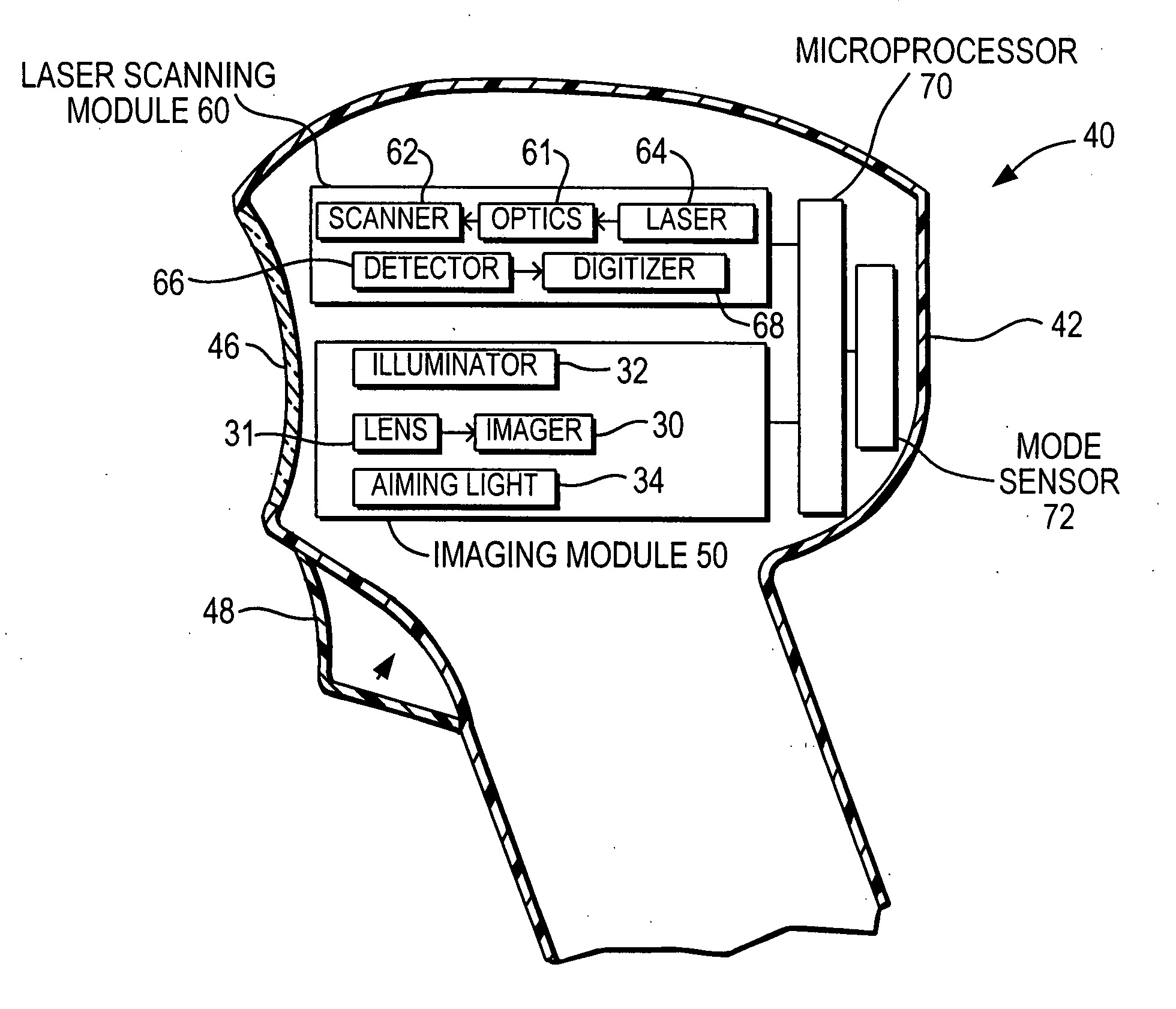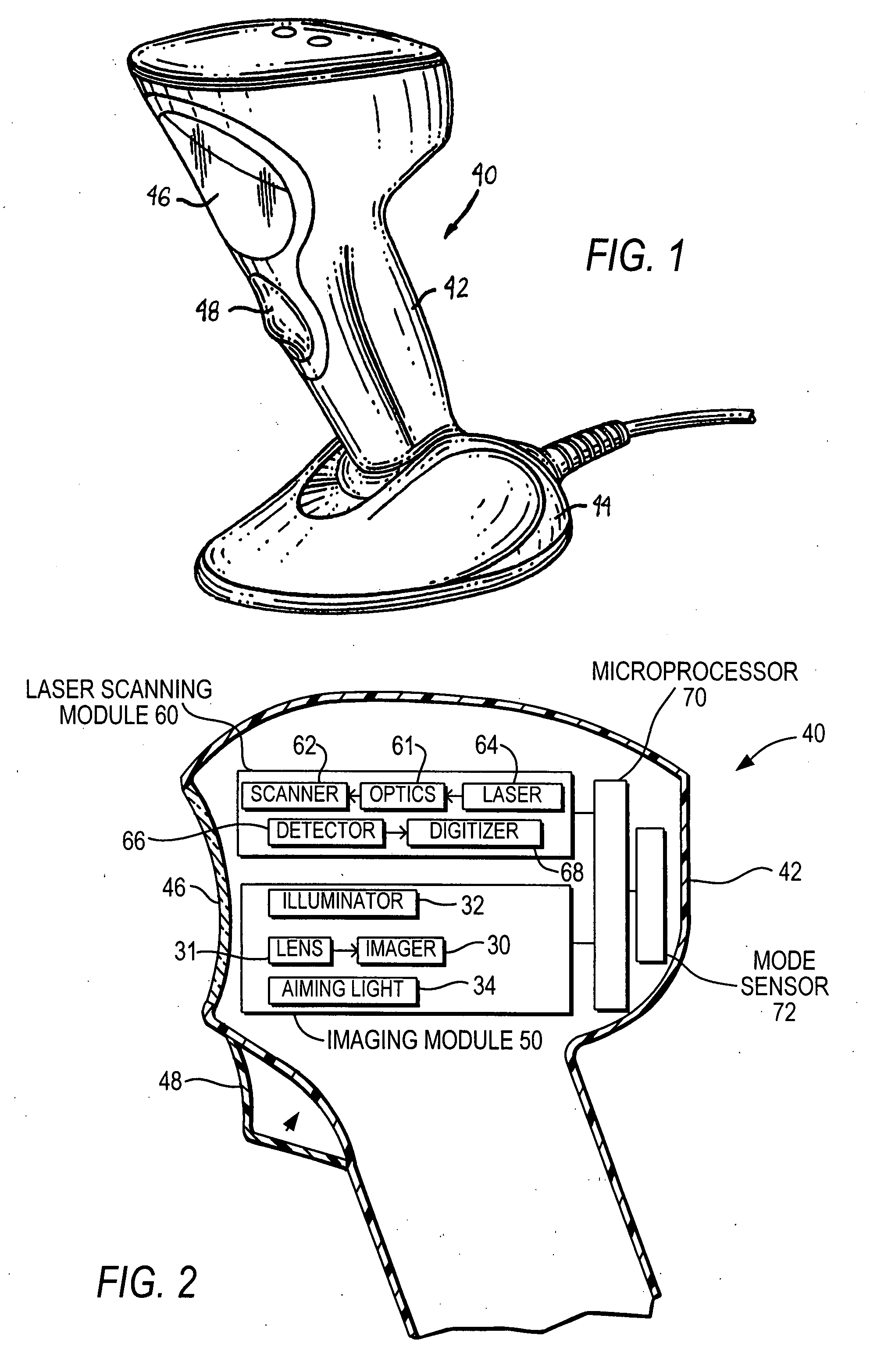Hybrid laser scanning and imaging reader
a laser scanning and imaging reader technology, applied in the field of hybrid laser scanning and imaging readers, can solve the problems of inability to read other two-dimensional symbols at all, the reader is too big and bulky to pick up and aim at symbols easily, and the laser beam-based reader is too big and bulky to achieve the effect of easy reading of wide targets, excellent and intuitive “aim and shoot”
- Summary
- Abstract
- Description
- Claims
- Application Information
AI Technical Summary
Benefits of technology
Problems solved by technology
Method used
Image
Examples
Embodiment Construction
[0039]Reference numeral 40 in FIG. 1 generally identifies an electro-optical, portable reader having a gun-shaped housing 42 connected to a base 44. The base 44 rests on a countertop or analogous support surface and serves for supporting the reader 40. The reader 40 can thus be used in a hands-free mode as a stationary workstation in which products bearing indicia, such as one- or two-dimensional symbols, are presented to, or slid or swiped past, a presentation area or window 46. The gun-shaped housing 42 also has a handle that can be picked up by an operator off the countertop and held in the operator's hand in a handheld mode. A trigger 48 is located on the gun-shaped housing 42 at a location underlying an operator's forefinger when the operator holds the handle in the operator's hand in the handheld mode. The trigger 48 is manually depressed to initiate reading of the symbol. The handle is permanently and pivotably connected to the base 44 in both the handheld and hands-free mode...
PUM
 Login to View More
Login to View More Abstract
Description
Claims
Application Information
 Login to View More
Login to View More - R&D
- Intellectual Property
- Life Sciences
- Materials
- Tech Scout
- Unparalleled Data Quality
- Higher Quality Content
- 60% Fewer Hallucinations
Browse by: Latest US Patents, China's latest patents, Technical Efficacy Thesaurus, Application Domain, Technology Topic, Popular Technical Reports.
© 2025 PatSnap. All rights reserved.Legal|Privacy policy|Modern Slavery Act Transparency Statement|Sitemap|About US| Contact US: help@patsnap.com



